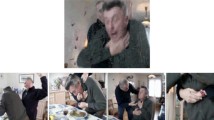Abstract
Novice learners find motion as a continuous process of change challenging to understand. In this paper, we present a pedagogical approach based on agent-based, visual programming to address this issue. Integrating agent-based programming, in particular, Logo programming, with curricular science has been shown to be challenging in previous research on educational computing. We present a new Logo-based visual programming language—ViMAP—and, a sequence of learning activities involving programming and modeling, designed specifically to support seamless integration between programming and learning kinematics. We describe relevant affordances of the ViMAP environment that supports such seamless integration. We then present ViMAP-MoMo, a curricular unit designed in ViMAP for modeling kinematics, for a wide range of students (elementary—high school). Finally, we describe in detail a sequence of learning activities in three phases, discuss the underlying rationale for each phase, and where relevant, report results in the form of observational data from two studies.










Similar content being viewed by others
Notes
Each line of code in the C-World can accommodate a maximum of six command blocks.
References
Abelson, H., & diSessa, A. (1981). Turtle geometry: The computer as a medium for exploring mathematics. Cambridge, MA: MIT Press.
diSessa, A. A. (1985). A principled design for an integrated computational environment. Human Computer Interaction, 1, 1–47.
diSessa, A., & Abelson, H. (1986). Boxer: A reconstructible computational medium. Communications of the ACM, 29, 859–868.
diSessa, A. A., Abelson, H., & Ploger, D. (1991a). An overview of boxer. Journal of Mathematical Behavior, 10(1), 3–15.
diSessa, A., Hammer, D., Sherin, B., & Kolpakowski, T. (1991b). Inventing graphing: Children’s meta-representational expertise. Journal of Mathematical Behavior, 10(2), 117–160.
Dyskra, D. I., Jr, & Sweet, D. R. (2009). Conceptual development about motion and force in elementary and middle school students. American Journal of Physics, 77(5), 468–476.
Eisenberg, M., & Buechley, L. (2008). Pervasive fabrication: Making construction ubiquitous in education. Journal of Software, 3(4), 62–68.
Elby, A. (2000). What students’ learning of representations tells us about constructivism. Journal of Mathematical Behavior, 19, 481–502.
Guzdial, M. (1994). Software‐realized scaffolding to facilitate programming for science learning. Interactive Learning Environments, 4(1).
Halloun, I. A., & Hestenes, D. (1985). The initial knowledge state of college physics students. American Journal of Physics, 53(11), 1043–1056.
Hestenes, D. (1993). MODELING is the name of the game. A presentation at the NSF Modeling Conference.
Latour, B. (1999). Pandora’s hope: Essays on the reality of science studies. Cambridge, MA: Harvard University Press.
Lehrer, R. (2009). Designing to develop disciplinary dispositions: Modeling natural systems. American Psychologist, 64(8), 759–771.
Leinhardt, G., Zaslavsky, O., & Stein, M. M. (1990). Functions, graphs, and graphing: Tasks, learning and teaching. Review of Educational Research, 60, 1–64.
McCloskey, M. (1983). Naive theories of motion. In D. Gentner & A. Stevens (Eds.), Mental models (pp. 299–324). Hillsdale, NJ: Lawrence Erlbaum.
McDermott, L. C., Rosenquist, M. L., & van Zee, E. H. (1987). Student difficulties in connecting graphs and physics: Examples from kinematics. American Journal of Physics, 55, 505–513.
Miller, A. I. (1978). Visualization lost and regained: The genesis of the quantum theory in the period 1913–27. In J. Wechsler (Ed.), On aesthetics in science (pp. 73–102). Cambridge: MIT Press.
Nersessian, N. J. (1992). How do scientists think? Capturing the dynamics of conceptual change in science. In R. N. Giere (Ed.), Cognitive models of science (pp. 3–45). Minneapolis, MN: University of Minnesota Press.
Papert, S. (1980). Mindstorms: Children, computers and powerful ideas. New York, NY: Basic Books.
Piaget, J. (1957). Logic and psychology. New York: Basic Books.
Sengupta, P., & Hubbell, W. (in review). Integrating computational thinking and modeling with high school physics using agent-based visual programming.
Sengupta, P. (2011). Design principles for a visual programming language to integrate agent-based modeling in K-12 science. In Sayama, H., Minai, A. A., Braha, D., & Bar-Yam, Y. (Eds.), Unifying themes in complex systems volume VIII: proceedings of the eighth international conference on complex systems (ICCS 2011) (pp 1636–1638). New England Complex Systems Institute Series on Complexity (NECSI Knowledge Press, ). ISBN 978-0-9656328-4-3.
Sengupta, P., & Farris, A. V. (2012). Learning kinematics in elementary grades using agent-based computational modeling: A visual programming based approach. In Proceedings of the 11th international conference on interaction design & children.
Sengupta, P., & Wright, M. (2010). ViMAP [Computer software]. Mind, Matter & Media Lab, Vanderbilt University, USA.
Sherin, B. L. (2000). How students invent representations of motion: A genetic account. Journal of Mathematical Behavior, 19, 399–441.
Sherin, B., diSessa, A. A., & Hammer, D. M. (1993). Dynaturtle revisited: Learning physics through collaborative design of a computer model. Interactive Learning Environments, 3(2), 91–118.
Tanimoto, S. L. (1990). VIVA: A visual language for image processing. Journal of Visual Languages and Computing, 1, 127–139.
Tisue, S., & Wilensky, U. (2004). NetLogo: A simple environment for modeling complexity. In Proceedings of the international conference on complex systems, Boston, May 16–21.
Tufte, E. R. (1990). Envisioning information. Cheshire, CT: Graphics Press, LLC.
Wechsler, J. (Ed.). (1978). On aesthetics and science. Boston: Birkhäuse.
Wilensky, U. (1991). Abstract meditations on the concrete and concrete implications for mathematics education. In Constructionism. Norwood, NJ: Ablex Publishing Corp.
Wilensky, U. (1999). NetLogo. http://ccl.northwestern.edu/netlogo/. Center for Connected Learning and Computer-Based Modeling, Northwestern University, Evanston, IL.
Acknowledgments
The authors gratefully acknowledge the support of Wilson Hubbell and Gokul Krishnan for sharing and working with important ideas during formative stages of this work. The first author would especially like to thank Rich Lehrer for encouraging this work since its ideation. Partial financial support was provided by Vanderbilt University and two grants from the National Science Foundation (NSF IIS # 1124175 and NSF CAREER OCI # 1150230).
Author information
Authors and Affiliations
Corresponding author
Rights and permissions
About this article
Cite this article
Sengupta, P., Farris, A.V. & Wright, M. From Agents to Continuous Change via Aesthetics: Learning Mechanics with Visual Agent-based Computational Modeling. Tech Know Learn 17, 23–42 (2012). https://doi.org/10.1007/s10758-012-9190-9
Published:
Issue Date:
DOI: https://doi.org/10.1007/s10758-012-9190-9




